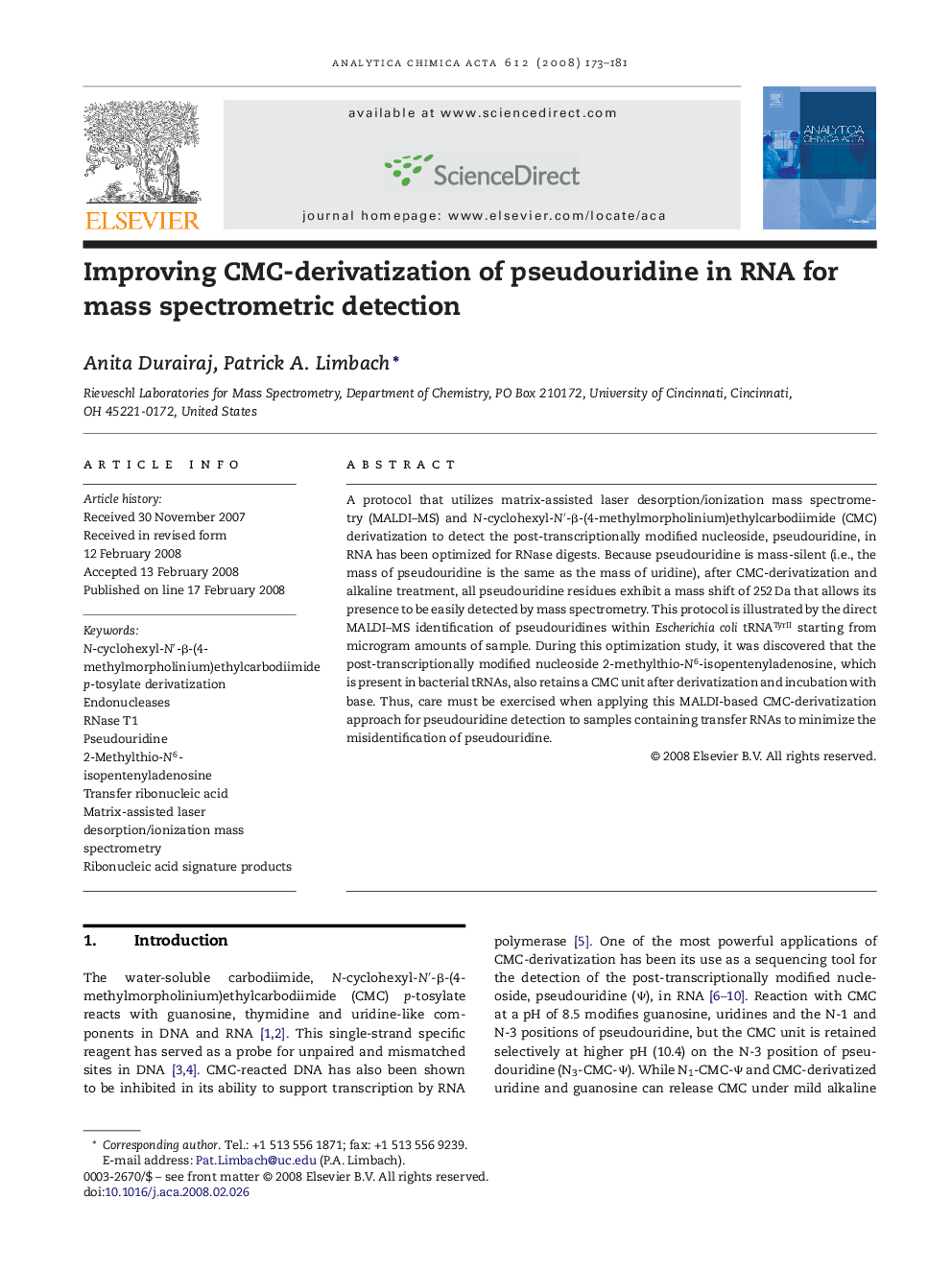| Article ID | Journal | Published Year | Pages | File Type |
|---|---|---|---|---|
| 1169824 | Analytica Chimica Acta | 2008 | 9 Pages |
A protocol that utilizes matrix-assisted laser desorption/ionization mass spectrometry (MALDI–MS) and N-cyclohexyl-N′-β-(4-methylmorpholinium)ethylcarbodiimide (CMC) derivatization to detect the post-transcriptionally modified nucleoside, pseudouridine, in RNA has been optimized for RNase digests. Because pseudouridine is mass-silent (i.e., the mass of pseudouridine is the same as the mass of uridine), after CMC-derivatization and alkaline treatment, all pseudouridine residues exhibit a mass shift of 252 Da that allows its presence to be easily detected by mass spectrometry. This protocol is illustrated by the direct MALDI–MS identification of pseudouridines within Escherichia coli tRNATyrII starting from microgram amounts of sample. During this optimization study, it was discovered that the post-transcriptionally modified nucleoside 2-methylthio-N6-isopentenyladenosine, which is present in bacterial tRNAs, also retains a CMC unit after derivatization and incubation with base. Thus, care must be exercised when applying this MALDI-based CMC-derivatization approach for pseudouridine detection to samples containing transfer RNAs to minimize the misidentification of pseudouridine.
